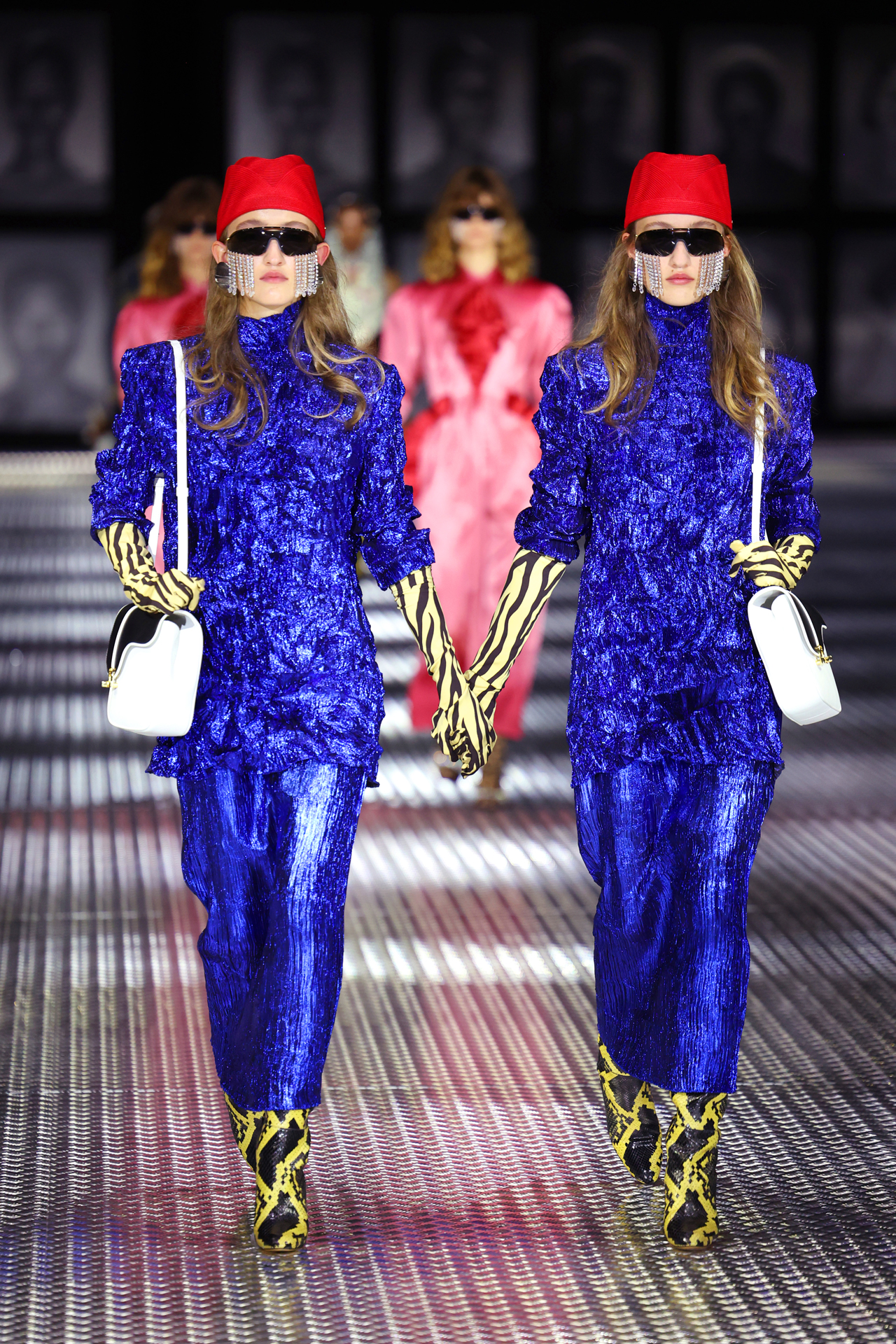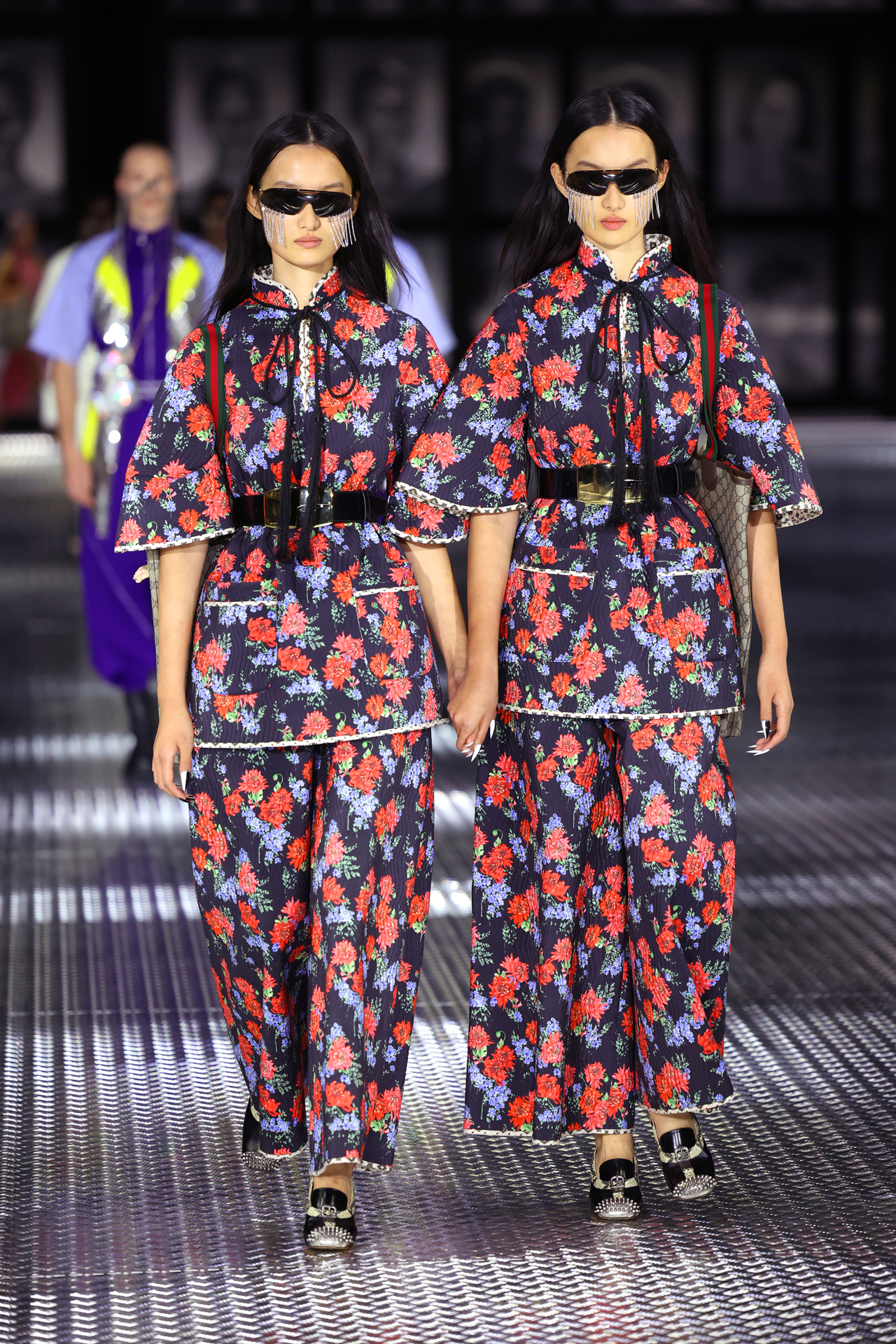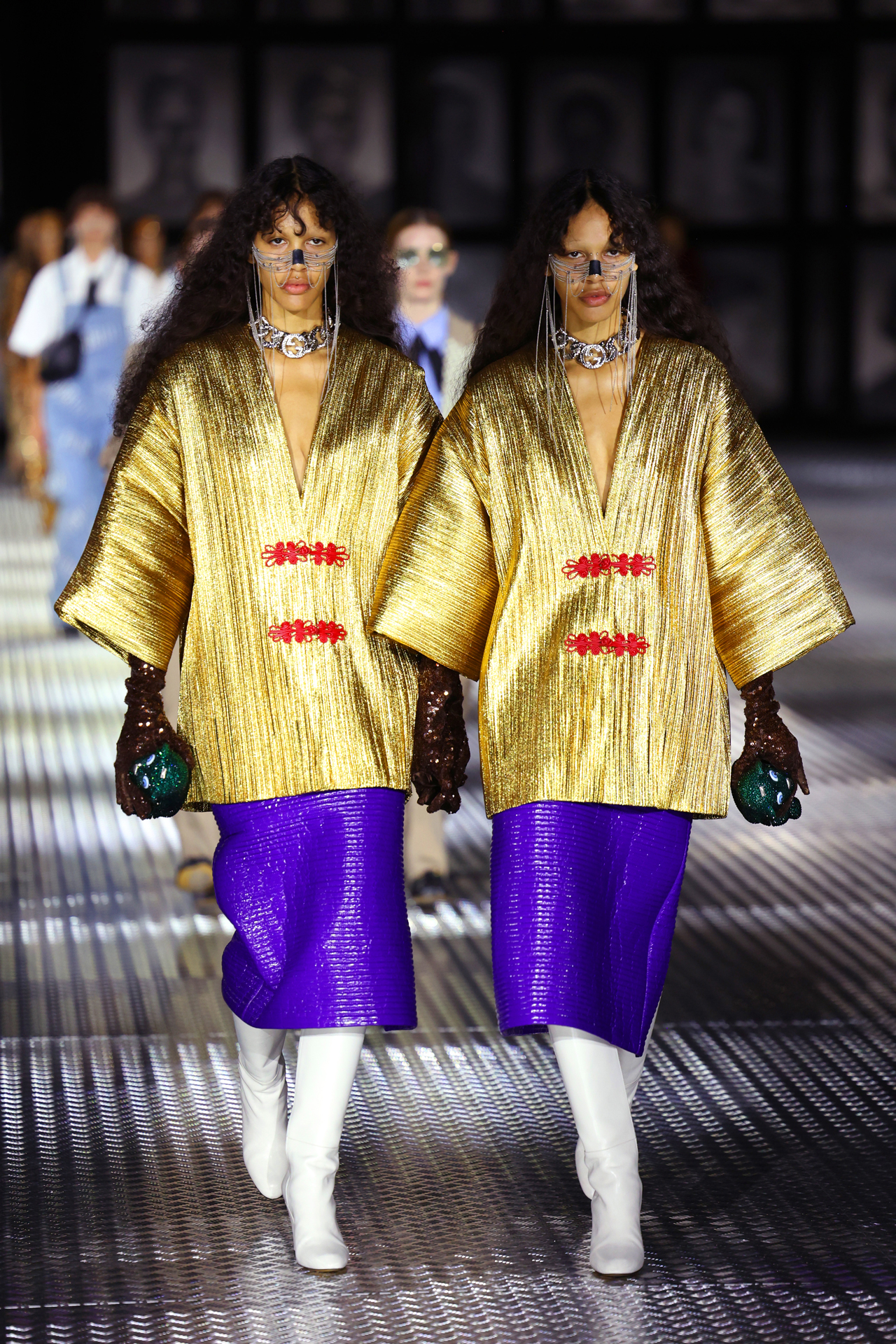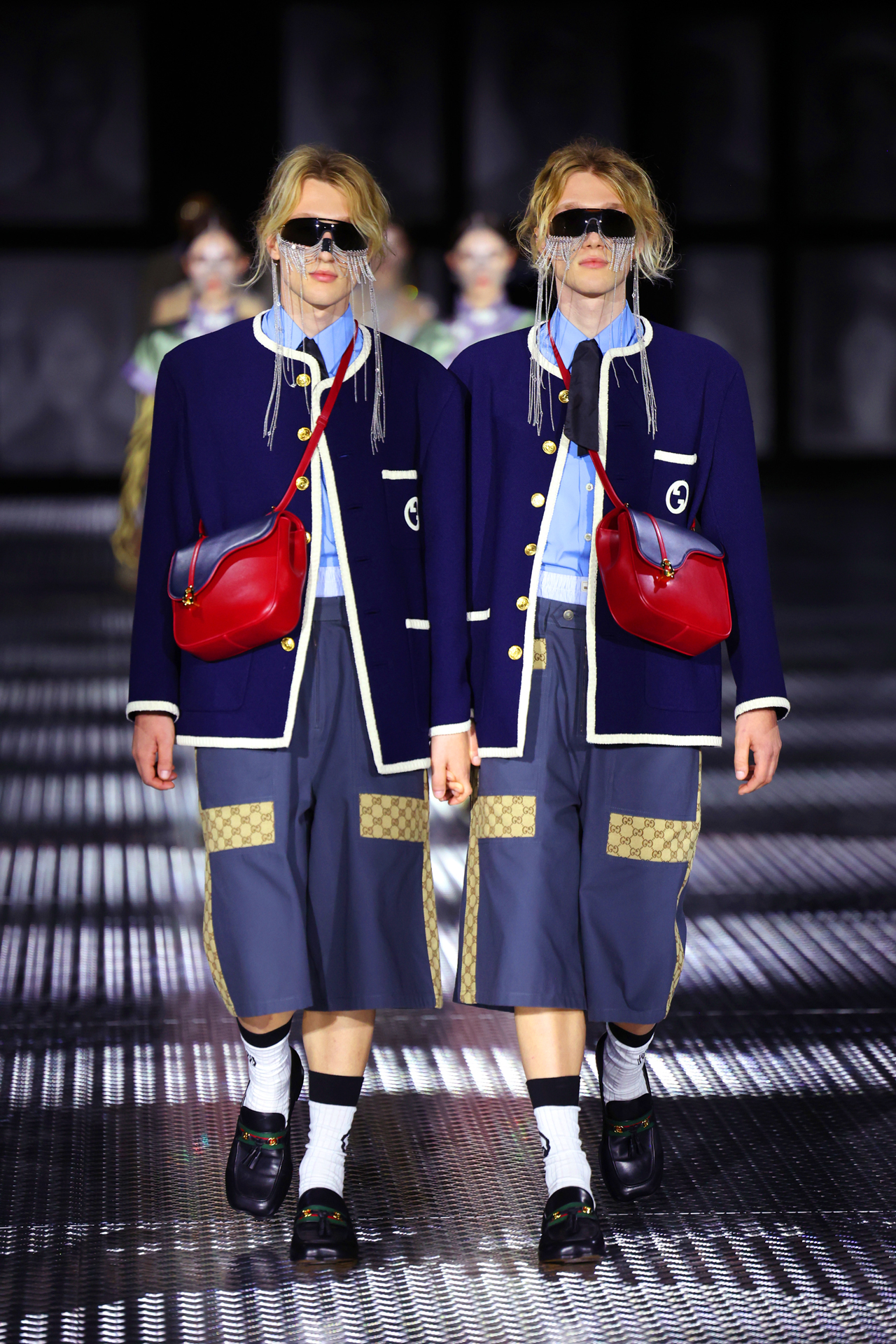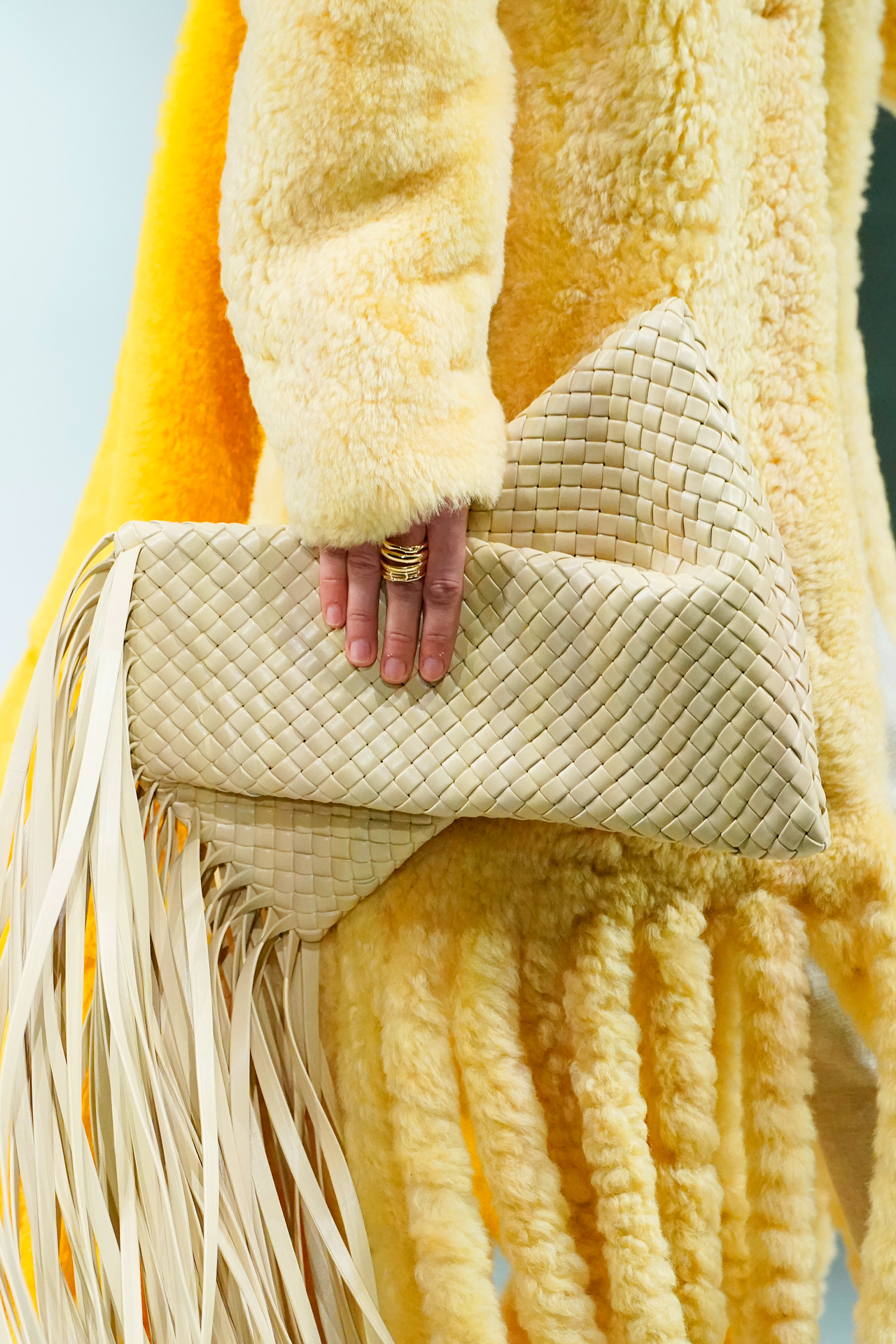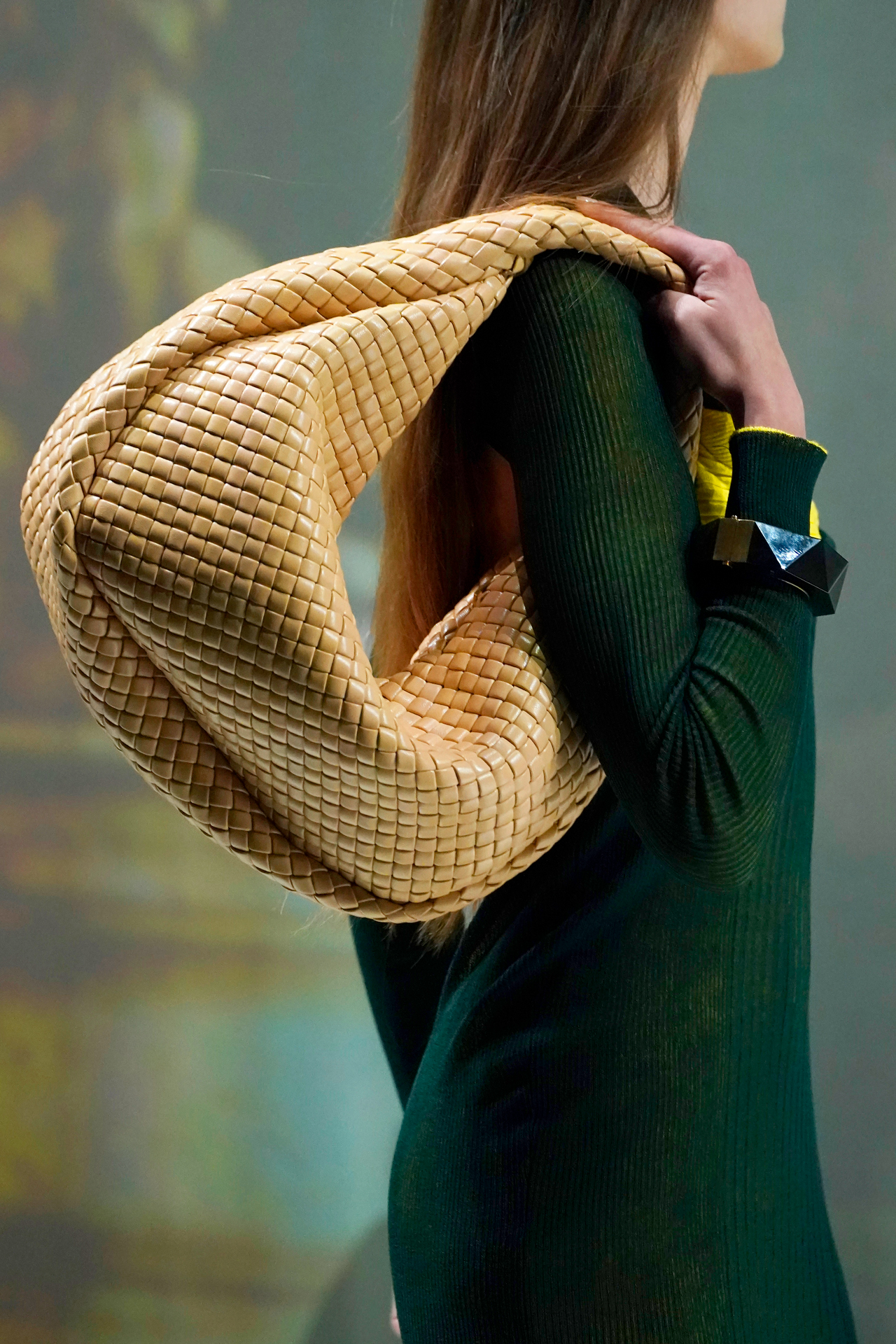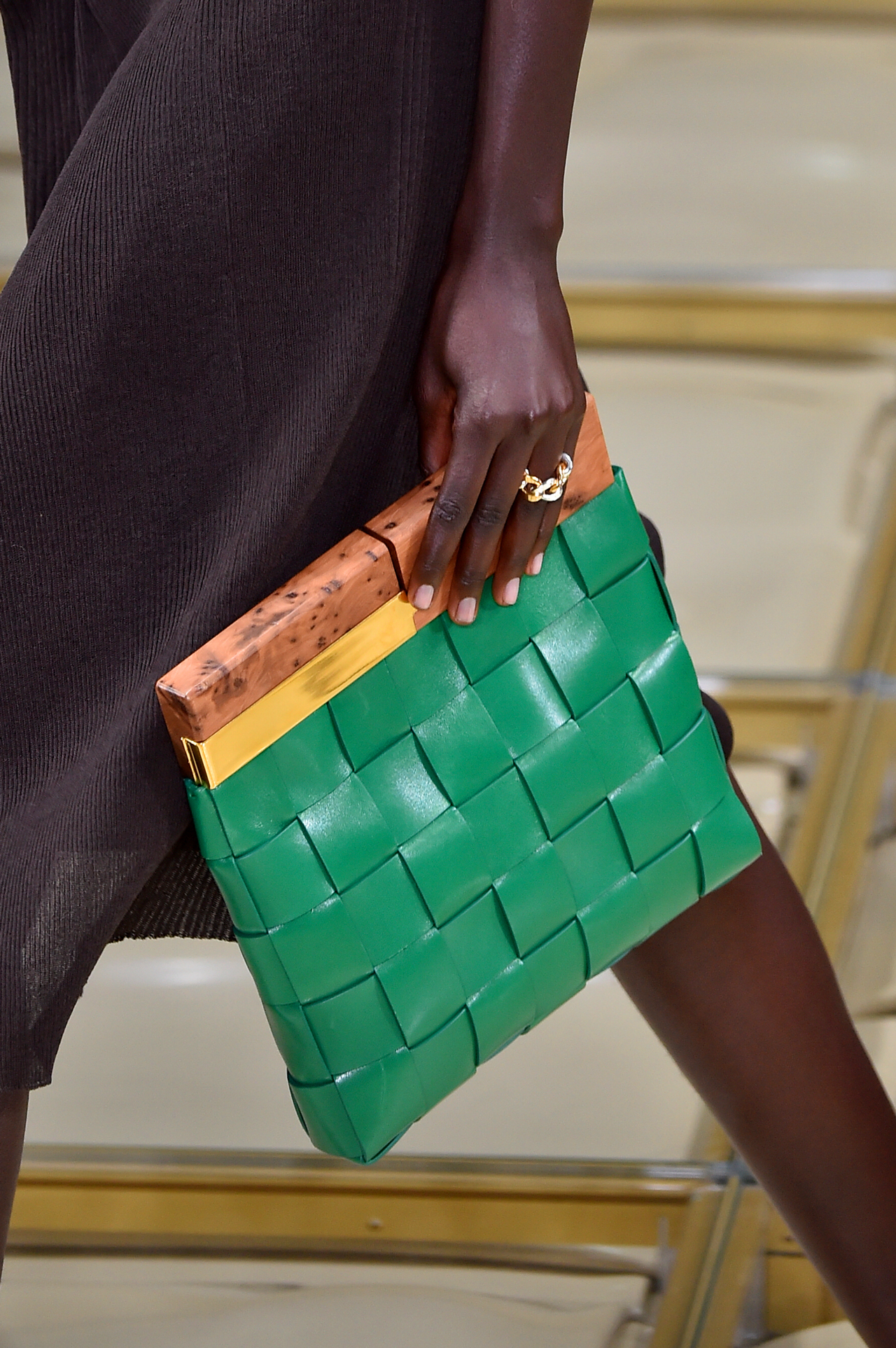News feed
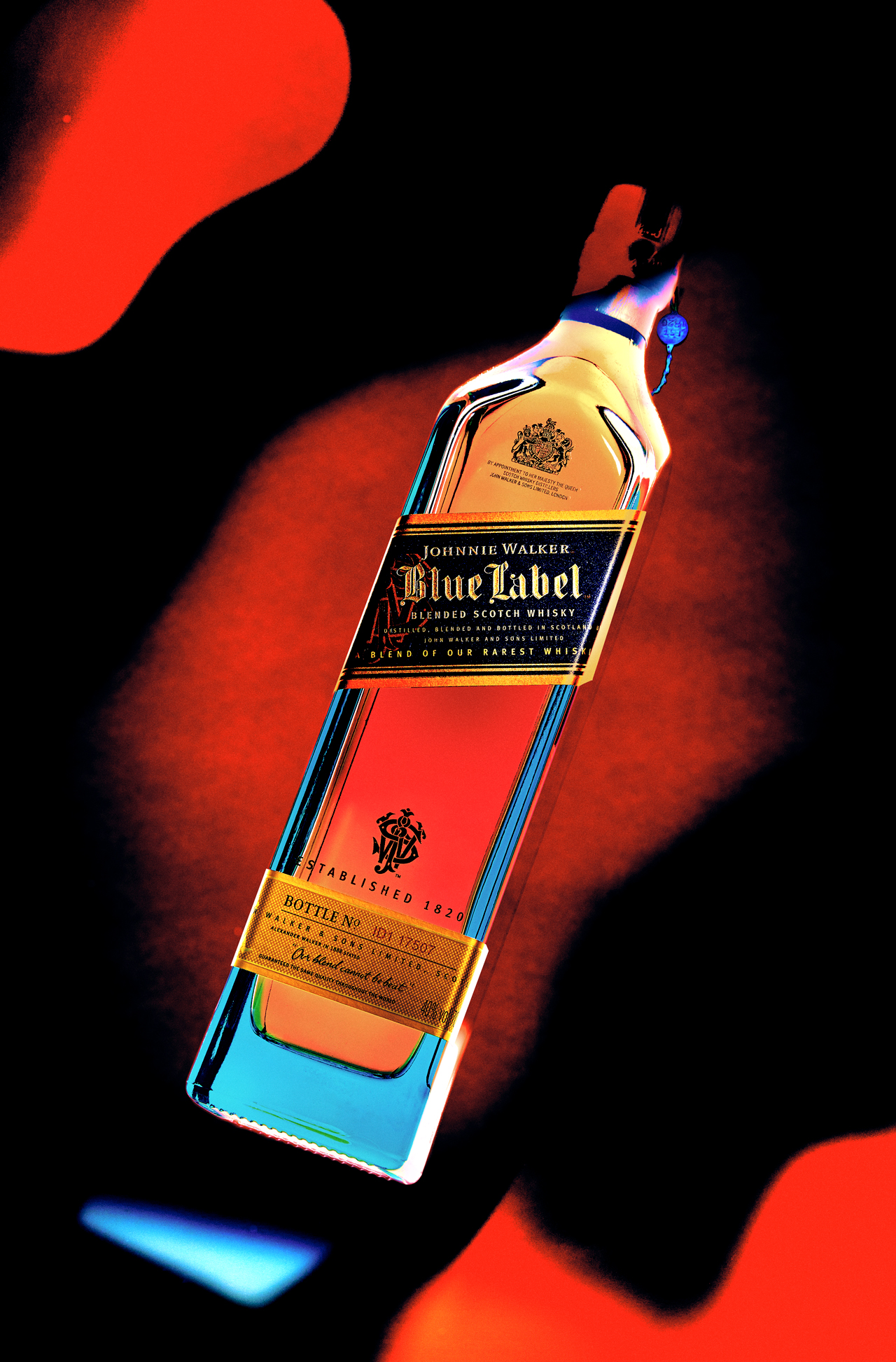
Think of the founder. The original. The person who, either out of necessity or desire, created an enterprise that would become an empire. Starting from the grass roots, the dusty floors of an outhouse or the back room of a warehouse, it’s doubtful they would have imagined they were laying down the foundations for a longterm future. Take the saddler, for example. A man named Thierry Hermès, who in 1837, was known for his leather harnesses and bridles, products used by the carriage trade and noblemen alike. It was a business that would, after generations, become a high fashion house now known as Hermès. Or the shoemaker. A boy named Salvatore Ferragamo who dappled with cobbling and opened his first store within his parent’s home in Campania, Italy circa 1915. The same shoemaker whose name would continue long after his death to become the prestige label still adored today. Or there was the milliner. A 16-year-old Parisian named Jeanne Lanvin who started as an apprentice hat maker in 1883 before curating a career as a successful couturier and businesswoman. Her eponymous label has since become the home of modern denier cri, especially thanks to late legendary designer Alber Elbaz. Then there was the grocery merchant. A young man named John Walker who, in 1820, was left to run the wine and spirits sector of a warehouse in Ayrshire, Scotland. After becoming proficient in dealing in whiskies, Walker began creating made-to-order blends that featured his name on the bottle. Some 200 years later, his legacy lives on.
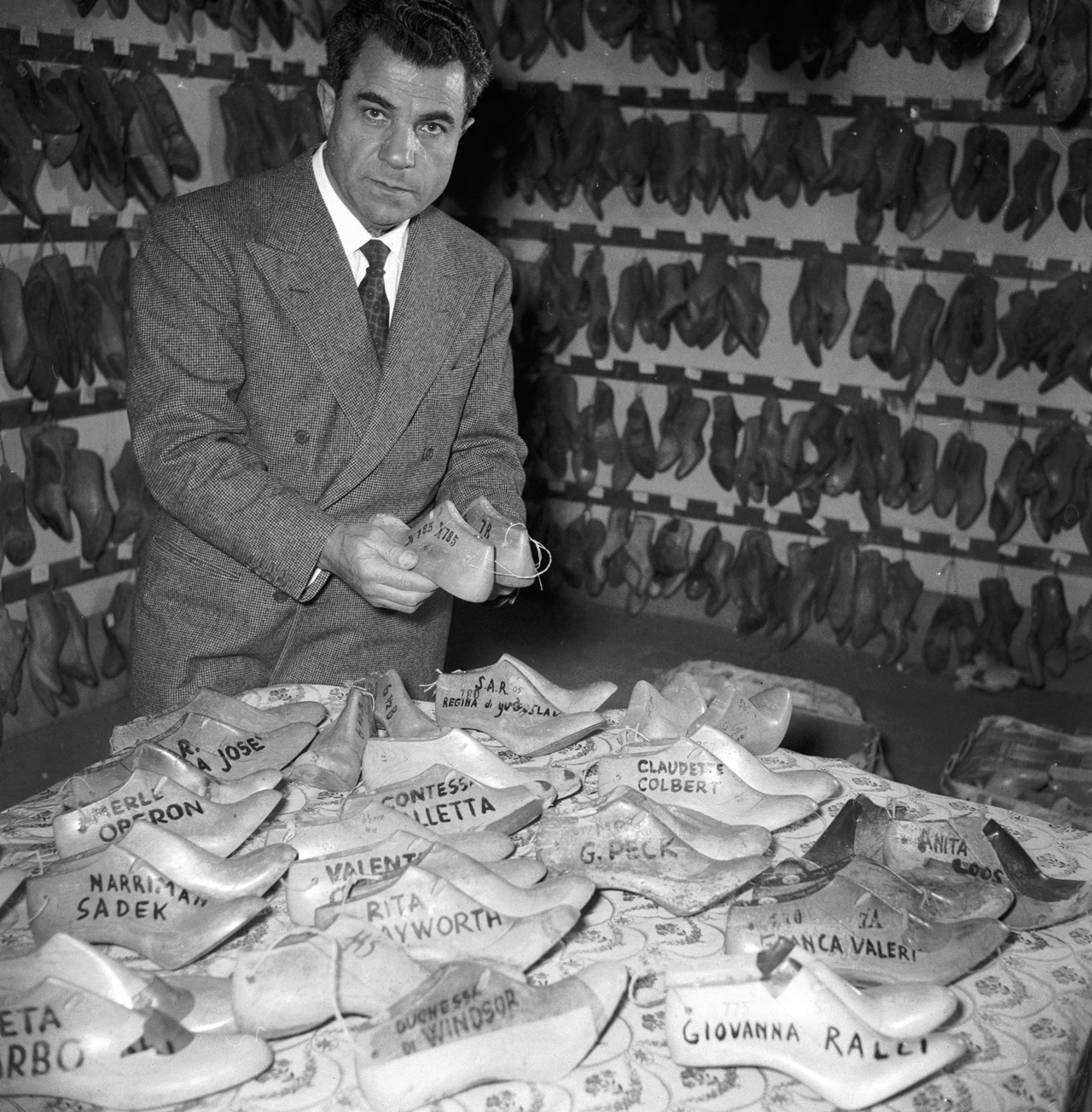
The origins of an iconic product make for only the beginning of its story, however. It’s the ensuing years, the decades, even centuries, that become crucial in balancing both historical integrity and modern relevance. In the case of these heritage Maisons, once the forefathers were gone and the name was left to the next generation, the brands continued to escalate, finding relevance in each new time-space. In fact, it was rarely the founders that brought these labels into their meteoric era, as time and history added gravitas to the very meaning of their businesses.
However, the two sides – the past and the present – are intrinsically linked when it comes to the longtime success of a luxurious product. While the originals established the foundations – the solid, timeless structure that remains an ever-present core to its purpose – the successors find the new-generational pathway. They build, improve and modernise, seeking an earnest connection between the complexities of modernity and the ghosts of a simpler time.
The value of time
“When John Walker first founded our brand he set out to create a whisky of such quality that it raised the standards of scotch across the board,” says Joao Matos, Marketing and Innovation Director for Johnnie Walker. “That same desire, to create something truly exceptional and to craft whiskies that push the boundaries of what is possible in scotch, still fires us today. The idea of continued progress and innovation has been at the core of what we do for more than 200 years.”
Perhaps you’ve tried it. Or perhaps you’re a connoisseur. Either way, it’s likely you have an understanding of its decadence. The Johnnie Walker Blue Label’s unrivalled depth of flavour, that iconic golden liquor that reflects and mirrors inside a cut glass tumbler. One that rests inside a decanter or pours straight from its tall, prestigious bottle – the one that angles out ever so slightly from bottom to top.
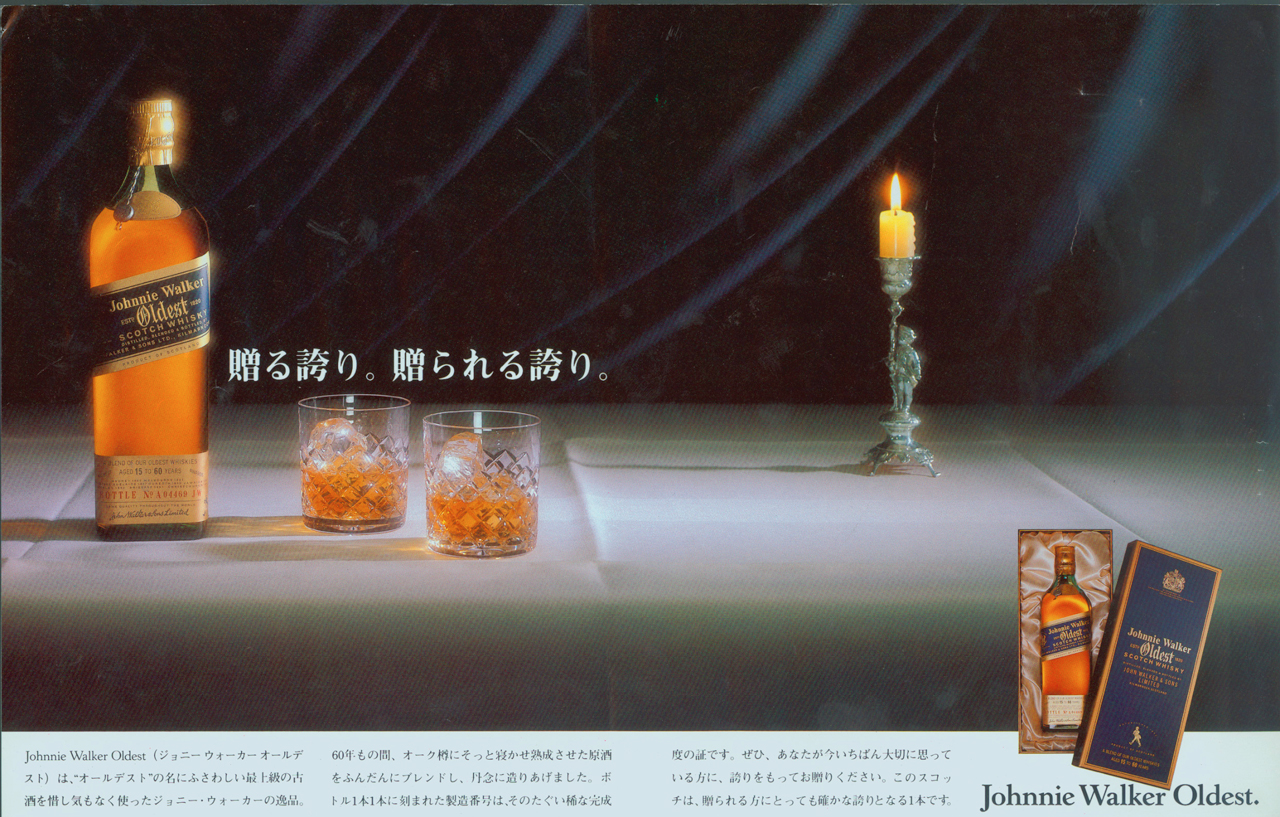
Like all forms of scotch, Johnnie Walker Blue Label hails from distilleries throughout Scotland, where unique notes – of darkness and lightness, texture and aftertastes – are cultivated depending on their environment. The process to produce their blends (that also include the Red Label, Black Label and Gold Label) comes down to the number of years the scotch (derived from the fermentation of malted grain) is left to cure in damp, dark, oak barrels. Some are left so long, the production site closes before the whisky is matured, making these batches the product of ‘Ghost’ distilleries.
Like with great art or estate antiquities or even heritage architecture, it is this history, the length of time it has been coming of value and its rarity, that remains the priceless factor in any tangible commodity. History cannot be designed or created. For example, to peruse a new collection from the House of Hermès alongside its vintage saddlery and silk scarves, makes the French Maison’s narrative immeasurably rich. Or to visit La Galerie Dior in Paris and see Monsieur Christian Dior’s original Bar Suit while also viewing the latest collection by Maria Grazia Chiuri is a serendipitous meeting of the past and the present. Or to revel in Louis Vuitton’s avant-garde offering by singer-turned-creative-director Pharrell Williams while also revisiting the original, monogrammed trunks of its namesake founder is a unique and stylistically cathartic experience.
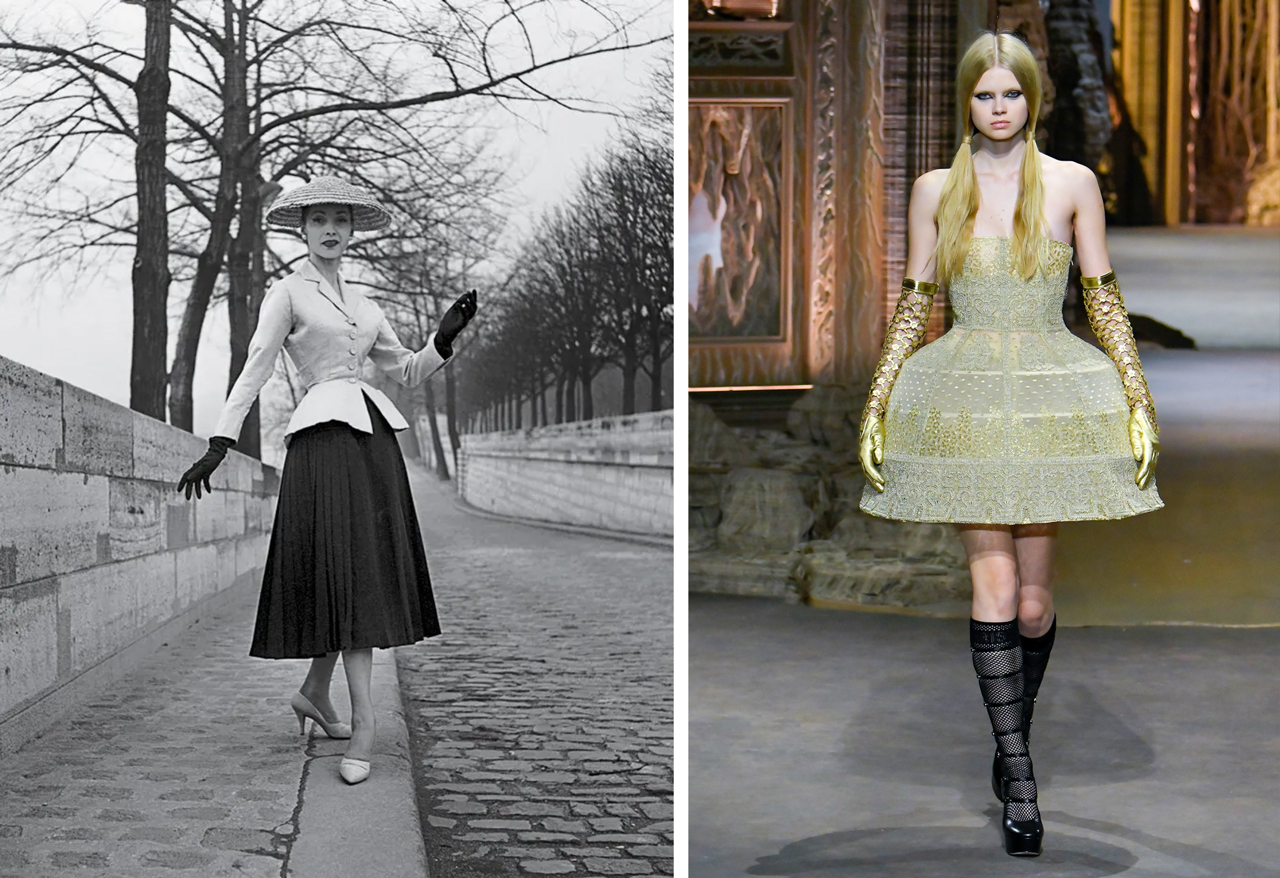
For Johnnie Walker, this investment in time is core to their foundations. Allowing barrels to rest for years, sometimes decades, means when a consumer today pours a glass, they are not only enjoying an indulgently deep moment in the present but are engaging with a tradition – a literally bottled moment from the past. And this luxury of new antiquity, so to speak, is escalated even further by the exceptional rarity of the Johnnie Walker Blue Label. Debuting in 1992, the Blue Label is crafted from the most premium oak barrels found in both active and ghost distilleries. Some, like the coveted Port Ellen, can sell for over US$5000.
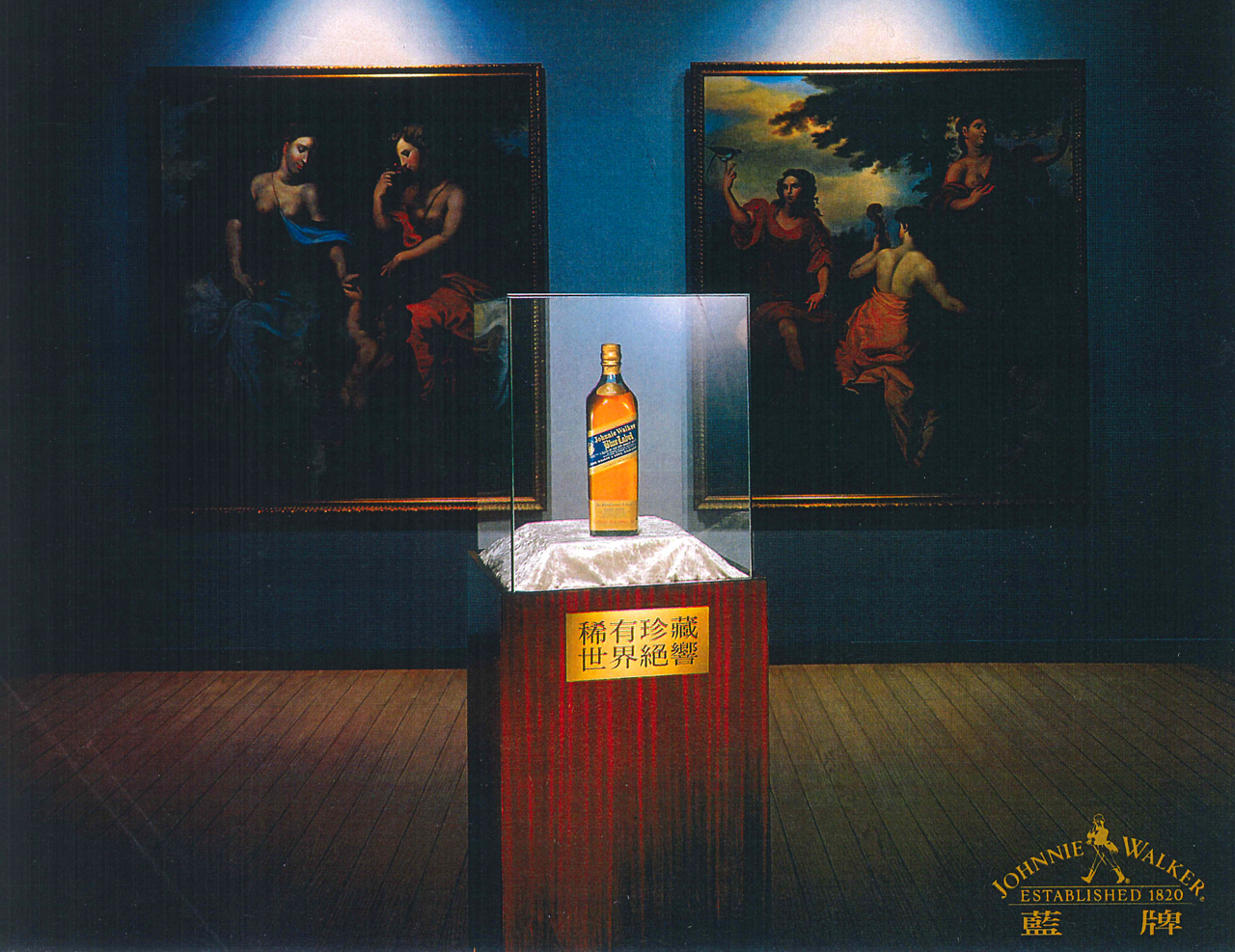
“Every drop of Johnnie Walker Blue Label is crafted using some of our rarest handpicked whiskies from across the four corners of Scotland including irreplaceable casks from long-closed ‘ghost’ distilleries – each bringing unique flavours and distinctive character of their own,” says Matos. “Only 1 in 10,000 casks in our unparalleled reserves of over 10 million maturing Scotch whiskies has the richness and character required to craft Johnnie Walker Blue Label. We choose the whiskies used to craft Johnnie Walker Blue Label because of their unique depth of flavour. Mature, aged whiskies are selected for their smoothness and deep flavours – rich fruits, smoke and refined vanilla sweetness. When they are perfectly balanced with younger, more vibrant whiskies they open up, bringing layers of effervescent flavour to this remarkable scotch.”
Making it modern
It’s a leap of faith when a label moves in a modern direction. It risks backlash from fundamentalists and criticism from those opposed to change. But change is a necessary part of survival. When Alessandro Michele first stepped in to creatively recharge Gucci circa 2015, his vintage opulence was an artistic shock. A departure from Tom Ford’s 90s sexiness, it revisited the label’s Italian heritage and ignited a new, global excitement for the brand. Now, the label is once again under construction. With the guidance of Valentino alum, Sabato De Sarno, the Gucci look is quieter in its luxury. Streamlined chic and decadent minimalism, it seems to be gathering momentum for a generation in tune with a premium subtlety.
Similarly, (and somewhat conversely) when wunderkind creative director Daniel Lee (now at Burberry) took 1960’s Venetian brand Bottega Veneta from nostalgia chic to macro modernism in 2019 his homage to the brand’s well-known woven leather was tactfully curated alongside a turbo, mechanical aesthetic. This newness instantly placed Bottega to the forefront of the zeitgeist. Now, with creative director Matthieu Blazy, the label continues its architectural silhouettes but this time in an oeuvre of tactility and layer definition.
Anecdotes for shake-ups are rife within all thriving heritage houses. From Prada’s Miuccia-Prada-meets-Raf-Simons’ 2023 collaboration that blended delicate femme with hoodies and sweats, to Anthony Vaccarello’s Saint Laurent that re-established power-dressing after Hedi Slimane’s rock’n’roll-isms, to Jonathan Anderson at Loewe who dramatically introduced a postmodern, incandescent cool to the 177-year-old Spanish brand, it proves that daring to take the step into the unknown, to press the green light for change, takes courage. Matos tells us that Johnnie Walker is also no stranger to thinking outside the (very chic) box when it comes to getting creative with the future. After all, the company has come a long way since its beginnings as a small, single-handed business from the south-west of Scotland.
“I think the world in which Johnnie Walker Blue Label emerged is a testament to what the brand has been about since its journey began in 1820 – forging new traditions,” he explains. “[Most recently], for Cities of the Future, [we worked] with renowned digital artist Luke Halls who reimagined a thriving and vibrant future society. One that transformed cityscapes and skylines, embracing new scientific developments to push the limits of what’s possible through 10 limited edition designs. By scanning a NFC on the front of the bottle, people can voyage into the world of 2220.”
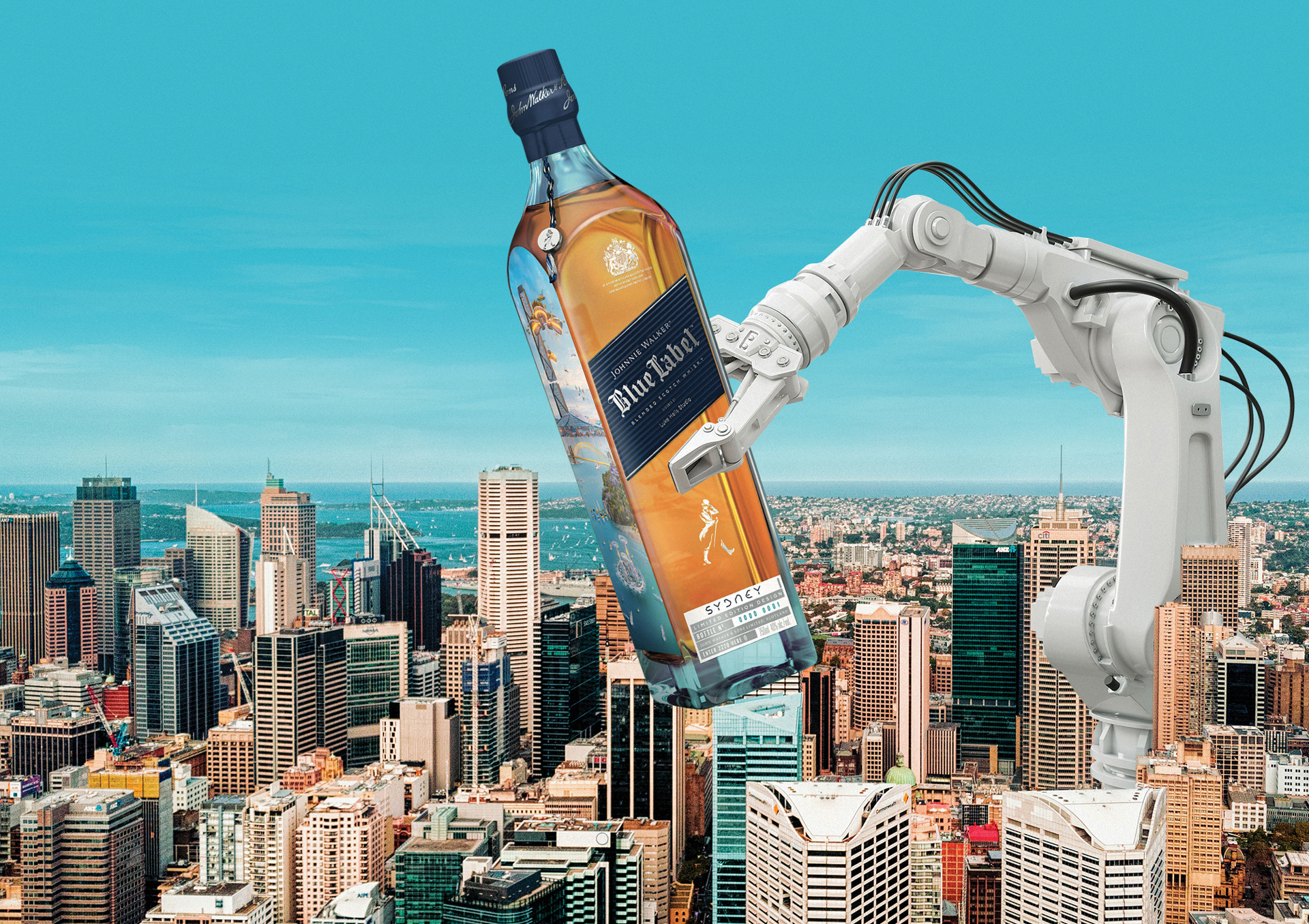
The future of luxury
The tide for premium experience over premium projection is coming in. That is, tokenistic luxury is lessening and tastemakers are craving quality rather than notoriety. In recent history, luxury was a logo splashed with conspicuous abandon across fashion and accoutrement clearly presenting its value-factor. Today, however, it is more about finding greatness in the heritage, the quality or the rarity.
The term “quiet luxury” entered the atmosphere earlier this year when high fashion began to sport the minimalist core of what one might imagine someone of high class and great taste to wear. Think bespoke suiting, high grade cashmere, leather totes, classic blazers. They were pieces to invest in, keep, wear and, most importantly, enjoy. And this experience has begun folding into all elements of a curated life. From interiors to travel to personal indulgences – to the perfected blend of superior Scotch Whisky.
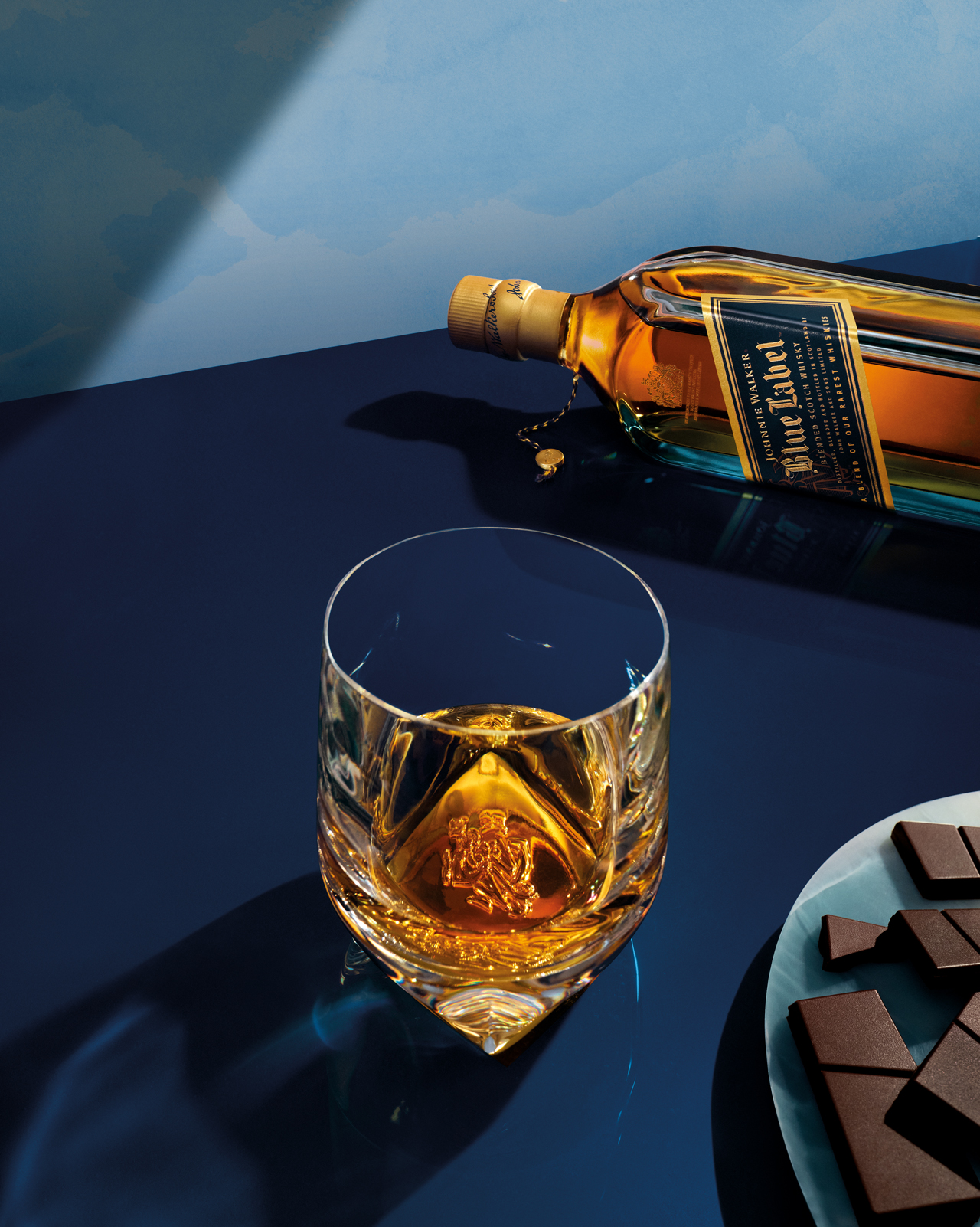
“In the last three fiscal years Johnnie Walker Blue Label net sales have doubled,” says Matos. “And our business is closing the latest fiscal year 50 percent[1] above pre-pandemic net sales levels and ahead of total Johnnie Walker trademark, which also enjoyed very strong growth during the same period.”
“Three decades ago it would be very difficult to access a luxury spirit at this price-point other than maybe a few cognacs or Champagnes,” he continues. “The world was yet to discover what luxury whisky meant, but Johnnie Walker dared to be a pioneer, taking a bold step to blend some of their rarest whiskies and create one with an incredible depth of flavour. The result was one of the finest creations from our former master blender Jim Beveridge.”
Taking traditional luxury into the future is an aspirational adventure. When a brand or style has been enjoyed by generations before, it quantifies our modern experience with it – and makes it supremely enjoyable on two levels. Firstly, for its inherent potential and secondly, for its rich history. And it’s out of deep respect that we honour all its precursory tribulations, all the time and hands it took to get something so rare to this moment, and offer it a well-deserved cheers. Raising a glass to being a part of its new chapter.
Drink Responsibly.
1. F23 fiscal year, Diageo (Global)
SHOP NOW:

JOHNNIE WALKER BLUE LABEL 700ML, SHOP NOW
DRINK RESPONSIBLY. GET THE FACTS: DRINKWISE.ORG.AU
THIS FEATURE IS PUBLISHED IN THE 16TH EDITION OF GRAZIA INTERNATIONAL. ORDER YOUR COPY HERE.





